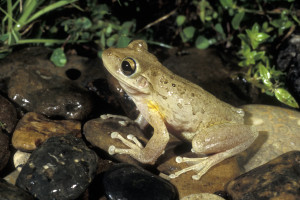 Do you know the lovely creatures that sing their song at night in the Everglades? Frogs and toads! These amphibians are no strangers to Florida, and can be spotted all over the Everglades. The wetland is home to many different species of frogs and toads, including:
Do you know the lovely creatures that sing their song at night in the Everglades? Frogs and toads! These amphibians are no strangers to Florida, and can be spotted all over the Everglades. The wetland is home to many different species of frogs and toads, including:
Florida cricket frog
Greenhouse frog
Green treefrog
Squirrel treefrog
Cuban treefrog
Florida chorus frog
Little grass frog
Pig frog
Southern leopard frog
Oak toad
Southern toad
Eastern narrow-mouth toad
Eastern spadefoot toad
The Everglades is a perfect environment for frogs and toads to live in. Amphibians like both dry and wet areas; when laying eggs, they remain close to bodies of water, which are abundant in the Everglades. Adult amphibians spend most of their adult life on land, while their babies and young grow and live in bodies of water.
Here is some more information on a couple of the frogs listed above. The pig frog’s croak sounds similar to the sound of a pig’s grunt, hence where the frog got its name. These frogs are brown and gray in color when they are adults. Their bellies are a yellow/brown pattern. Their skin is permeable and actually reflects toxins in the ecosystem. They are similar looking to both green frogs and bullfrogs. They can grow up to 6 inches in length. In the Everglades, scientists are studying the pig frog, because of their importance in the food chain in the wetland; they believe these frogs can tell them a lot about the overall health of the Everglades. In the Everglades, they can be found by marshes and ponds. Their breeding season is from later spring to August.
The Florida chorus frog can be found in many parts of Florida, including the Everglades. They are smaller in size and grow to be 1.25 inches. Their coloring depends on the weather. When it’s warm, they appear to be a light gray color with dark gray spots and when it’s colder, they are a darker gray in color, and their spots aren’t noticeable. The Florida chorus frog can be found in near the edges of water sources or near grass clumps. They also frequent marshes, ponds, and drainage ditches. This frog’s breeding season is dependent on the rain, so in the Everglades this stretches from late spring to the fall.
Want a glimpse of some of these frogs up close? A great way to see these amphibians and other creatures in the Everglades is on an airboat! Come join Captain Mitch’s Airboat Tours for an adventure through a mystical place that you’ll never forget. To book a trip, click here or call 800-368-0065.
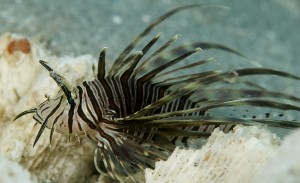 The Florida Everglades have long been a popular tourist destination for visitors from around the United States and around the world. It is easy to see why so many people make this a must see place on their “bucket lists” since it is a unique, one of a kind landscape that gives you access to an incredibly diverse and sensitive environment. The Everglades is a wilderness preserve like no other, allowing visitors a chance to experience flora and fauna that can’t be seen many (if any) other place on earth.
The Florida Everglades have long been a popular tourist destination for visitors from around the United States and around the world. It is easy to see why so many people make this a must see place on their “bucket lists” since it is a unique, one of a kind landscape that gives you access to an incredibly diverse and sensitive environment. The Everglades is a wilderness preserve like no other, allowing visitors a chance to experience flora and fauna that can’t be seen many (if any) other place on earth.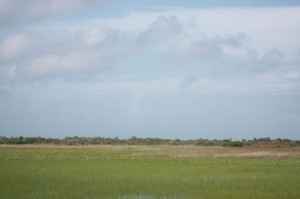 The rest of us may have four seasons (Spring, Summer, Fall, and Winter), but did you know the Everglades only has two seasons? The Everglades seasons don’t go by the temperature, but rather the water levels in the wetland. The two seasons are known as: the Wet Season and the Dry Season.
The rest of us may have four seasons (Spring, Summer, Fall, and Winter), but did you know the Everglades only has two seasons? The Everglades seasons don’t go by the temperature, but rather the water levels in the wetland. The two seasons are known as: the Wet Season and the Dry Season.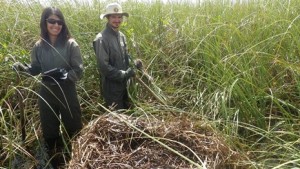 The Everglades National Park may be full of plants, animals, birds, insects, fish, and water, but it’s also home to many different research programs. The South Florida Natural Resources Center (SFNRC) conducts research that informs the management of the south Florida parks pertaining to wildlife, restoration, water quality, hydrology, and invasive plants and animals.
The Everglades National Park may be full of plants, animals, birds, insects, fish, and water, but it’s also home to many different research programs. The South Florida Natural Resources Center (SFNRC) conducts research that informs the management of the south Florida parks pertaining to wildlife, restoration, water quality, hydrology, and invasive plants and animals.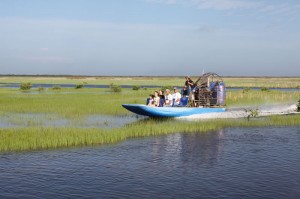 Airboats are one of the most exciting, up-close-and-personal ways to get around the Everglades. They give visitors a chance to see the wetland’s vastness, along with its flora and fauna. Airboats are a safe way to glide through the waterways, but like anything there are risks. Airboat injuries and accidents have occurred, so it is important as a passenger you follow all safety precautions and rules.
Airboats are one of the most exciting, up-close-and-personal ways to get around the Everglades. They give visitors a chance to see the wetland’s vastness, along with its flora and fauna. Airboats are a safe way to glide through the waterways, but like anything there are risks. Airboat injuries and accidents have occurred, so it is important as a passenger you follow all safety precautions and rules.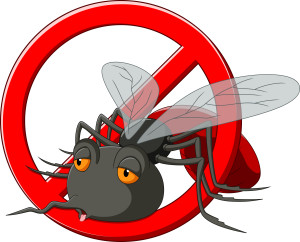 A visit to the Everglades is a once in a lifetime experience. In the Everglades, you get to see a unique ecosystem that is unlike anything else in the United States. It is a diverse and abundant ecosystem that is an excellent place for the avid nature enthusiast and bird watcher alike.
A visit to the Everglades is a once in a lifetime experience. In the Everglades, you get to see a unique ecosystem that is unlike anything else in the United States. It is a diverse and abundant ecosystem that is an excellent place for the avid nature enthusiast and bird watcher alike.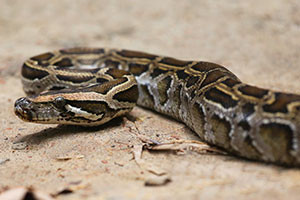 One of the biggest threats to a balanced ecosystem in the Everglades is the Burmese pythons. These snakes are an invasive species in the wetland. The python happens to love the Everglades, but this wetland cannot handle its presence. Pythons prey on almost anything in their path, and have been known to cause a large depletion in the rabbit, opossum, wading birds, racoons and other small populations population in the area. Its only predators are the American alligator and the Florida panther. However, these pythons can put up a fight and a recent video take by someone in the Everglades showed an alligator losing a fight with a python in water.
One of the biggest threats to a balanced ecosystem in the Everglades is the Burmese pythons. These snakes are an invasive species in the wetland. The python happens to love the Everglades, but this wetland cannot handle its presence. Pythons prey on almost anything in their path, and have been known to cause a large depletion in the rabbit, opossum, wading birds, racoons and other small populations population in the area. Its only predators are the American alligator and the Florida panther. However, these pythons can put up a fight and a recent video take by someone in the Everglades showed an alligator losing a fight with a python in water.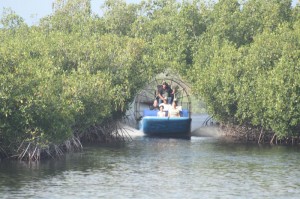 The Everglades is a unique and dynamic landscape that is home to a whole host of different plant and animal species. It is a one-of-a-kind ecosystem that is as breathtaking as it is bursting with life. However, it should be noted that the ecosystem of the Everglades is a sensitive and precarious ecosystem and even minor changes or damage to the Everglades can have dramatic consequences on the heath of the overall ecosystem.
The Everglades is a unique and dynamic landscape that is home to a whole host of different plant and animal species. It is a one-of-a-kind ecosystem that is as breathtaking as it is bursting with life. However, it should be noted that the ecosystem of the Everglades is a sensitive and precarious ecosystem and even minor changes or damage to the Everglades can have dramatic consequences on the heath of the overall ecosystem.





